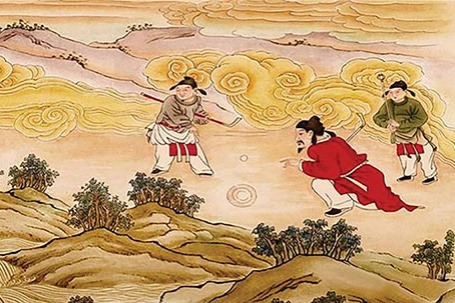Protecting the living monuments
A nationwide program elevates ancient trees as irreplaceable historical symbols, Deng Zhangyu reports.


Additionally, the museum has collaborated with a local agricultural university to set up dedicated laboratories for joint research efforts.
The core of future protection lies in treating the cypress as an irreplaceable piece of cultural and natural heritage, says Guo. "Through a collaborative model of State leadership, technological support, systematic management and public participation, the tree will better serve as a living narrative of Chinese civilization."
The temple, cemetery and family mansion of Confucius, the great Chinese philosopher and educator from the 6th to 5th centuries BC, form a large complex of monuments located in Qufu, Shandong province. This complex also houses thousands of ancient trees. It is included in the list due to its cluster of 310 ancient trees, each over 500 years old.
Confucius and Confucian culture have long admired the spirit of pine and cypress trees, associating the cypress with noble character and high moral values. For over 2,000 years, Qufu, the hometown of Confucius, has continued the tradition of planting the species.
"In Qufu, there are more than 10,000 trees that are over 100 years old. The locals have always demonstrated a strong awareness of tree protection," says Cao Shenglei from the Qufu Ancient and Notable Trees Protection Center.
In the Temple of Confucius, legend has it that Confucius personally planted a cypress tree. The tree, considered a symbol of Confucian values, has endured cycles of death and revival over millennia; each time the tree has died, local people have planted a new cypress in the same place. The tree today is the fifth-generation successor of the original.

For two millennia, celebrated poets and emperors have composed verses in praise of the tree, while master painters have captured its form through their art. The tree is accompanied by more than a dozen inscribed steles, including calligraphy dedicated by Emperor Kangxi and Emperor Qianlong from the Qing Dynasty (1644-1911).
"The cypress tree has a well-documented lineage with extensive historical records. It is a witness to history, a reflection of Qufu's culture, and a true living cultural relic," Cao says.
In his view, the release of the list not only emphasizes regular maintenance but also calls for deeper exploration and interpretation of the cultural value behind the trees. This has been the focus of the Qufu Ancient and Notable Trees Protection Center in recent years.
Founded in 2021, the center has conducted detailed surveys and routine maintenance of ancient trees while actively engaging in public education. By leveraging the cultural significance of the trees, they have promoted Confucian values and developed a variety of cultural and creative products.
Cao notes that recent national policies and regulations have provided new avenues for securing funds for ancient tree protection, offering clear legal grounds for such applications.
In March, China implemented its first national-level regulations dedicated to the protection of ancient and notable trees. These regulations established a legal framework for resource surveys, conservation and cultural preservation, while also imposing penalties for any damage to these natural treasures — effectively addressing gaps in previous legal measures.
Zhang Liming, director of the ecological protection and restoration department of the National Forestry and Grassland Administration, says the regulations align with China's broader goals of building an "ecological civilization" and preserving cultural identity.
Zhu Xingxin and Zhao Ruixue contributed to this story.




































